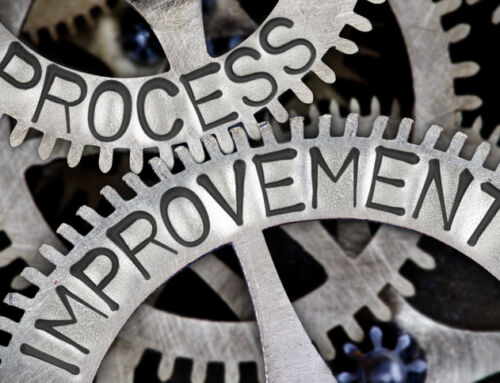The saying goes: “The only constant is change.” Nowhere is that statement truer than in procurement!
Don’t miss updates on Procurement & Supply Chain, Subscribe here!
If you’re a procurement professional and you haven’t adapted to new ways of carrying out your work, the world is passing you by. But it’s not enough to try to get to where procurement is today. You must prepare for the future of these important business functions.
We here at the Next Level Purchasing Association asked procurement experts across the world their predictions and greatest challenges they expect to tackle in 2015. As expected, we received a rather diverse range of answers from the procurement experts polled. Below are the thoughts of 34 procurement experts:
Procurement Education
“Social Responsibility. Unlike any time before in history, today’s business experts want to make as much of a positive impact on the world as they want to make money for shareholders. Because buying decisions can direct money either towards or away from socially irresponsible activities, procurement departments are at the forefront of corporate social responsibility efforts. With the right focus, procurement departments can help end practices such as coerced and child labor, unsafe working conditions in developing countries, crimes against humanity by groups controlling certain minerals, animal welfare abuses, and so on.”
Charles Dominick, SPSM3® | President and Chief Procurement Officer | Next Level Purchasing Association | @nextlevelpurch
“Let’s face it, it is a brand new game, with new rules requiring new skill sets that the older generation does not possess. This isn’t because they did not have the ability to acquire said skills. The fact is that the role and value of procurement as defined by those outside of the profession, has changed dramatically. It has evolved from being a functional job to a strategic position. Or to put it another way, in the past, you did not require a 4.0 grade average from a prestigious university to become a “buyer”. Nor did you, early in your career, have to have experience in terms of dealing with a globalized supply base within the framework of a socially responsible mandate.”
Jon Hansen | Host | PI Window on Business | @piblogger1
“There is a generational shift going on that has big implications for the supply chain industry. It’s no secret that the sector is dominated by Baby Boomers, many of whom will be retiring in the next 10 years. For the industry to maintain its strength we need to attract more Millennials to replace those who are leaving – and there are plenty of talented people to draw from. In fact, the U.S. Census Bureau projects that for the first time this year, the Millennial generation will outpace Baby Boomers – vying for the largest population.
We need the “best of the best” in this industry. Organizations’ health and vitality—indeed, the strength of our economy—depend on having outstanding people in procurement and supply chain positions. Their work affects their companies’ brands, competitive positioning, sales and overall financial performance. How else will we succeed if we don’t have talented Millennials to carry the profession forward? Part of the solution is educating Millennials about what the industry can offer them.”
Kristin Carty | Outreach Director | ThomasNet | @ThomasNet
Procurement Technology
“I would say the most important trend this year will be another step change in the use of procurement technology. However as a recruiter I would say that the most important thing in our area is for procurement experts to get better at recruitment.
Specifically in a market characterized by skills shortages in key areas, CPO’s need to develop an effective talent attraction strategy. Furthermore, they also need to retain their best people who will be targeted by head hunters for roles with other organizations.
I would also say the biggest issue is the poor/elongated recruitment processes and a very cost driven agenda when it comes to using recruiters. Companies expect people to make all the effort. The companies who “get” talent attraction realize it’s a 2-way process.”
Andrew Daley | Founding Director | EdburyDaley | @ProcEdburyDaley
“The most important trend, from my view, is to be a better partner with the entire business operation. With rapid technological changes and globalization, the need to be nimble and understanding is paramount to success in procurement. We should have long progressed from “buying things” to managing interactions, whether between suppliers and our operations or between our users and the goods and services they use.
Another trend that supports that partnering, is education. We must educate our business partners on the value procurement brings. We do not simply RFx suppliers to death. We must drive make/buy decisions, drive demand management, drive fit and function analysis – all of which are not typically thought of as “procurement” functions. If we don’t educate our business partners on these ideas, procurement sets its own countdown to elimination ticking.
Last, a trend I am seeing desired by business expertship is the drive to compliance – spearheaded by Procurement. If we allow our spend to re-fragment through poorly coordinated or even well-meaning use of non-approved suppliers, all leverage internal and external evaporates. It is incumbent on us to partner with our Finance teams to delve into the ERP/MRP systems and discover instances of “leakage”, plug those holes, and develop an understanding with the business to prevent future occurrences.”
Michael McGann | Head of Global Procurement | Matthews International
“I have actually reached out to a couple procurement software teams with the exact question myself to help forge our direction and keep up with best practices. I will say that for City National Bank (CNB) it will be to upgrade to a more efficient integrated P2P system.”
Gene Galvin | Vice President of Procurement | City National Bank | @CityNational
“There is a step-change afoot in the procurement software space. Sourcing and procurement applications will more closely support to the way procurement professionals work in the real world. That means unified platforms where all functionality is native. At the same time, cloud economics will continue to gain ground. Factor in the integration of mobile and touch devices, improved analytics, better design and better interfaces to the mix – we’ll the growing sophistication and intelligence of procurement technology will have a big impact on the productivity of enterprise procurement organizations worldwide.”
Al Girardi | Global Vice President of Marketing & Analyst Relations | GEP Worldwide | @GEP_tweets
The most important procurement trend for 2015 remains the adoption of procurement software, in particular for small- and medium-sized businesses. Full disclosure: I work for a company that develops a procurement solution geared towards small- and medium-sized businesses. So, I’m biased. But this is more than simple company promotion – the adoption of procurement technology is the catalyst to improving any purchasing function. That’s because procurement software has can have a dramatic effect on supplier management, company budgets an even in-house environmental goals. Truly, choosing an e-procurement solution can help any business improve on the critical procurement trends we’ve been discussing over the past few years. Why focus on just one trend, or improving in one area, when you can tackle multiple areas?
Sean Kolenko | Business Development | Procurify | @Procurify
“Big data is the most important trend for procurement in 2015. Trying to capture this data has proved challenging so far but get this right..and there will be a lot of benefits on offer – a more optimized supply chain, the ability to make better decisions etc.”
Tim Burt | Deputy Editor | Procurement Leaders Magazine | @tburt85
“I see the evolution of Big Data as the next big thing. Specifically visualization of Contract Data, Spend Data, and Savings.”
Chad Johnson | Vice President – Procurement Services | McKesson Corporation | @McKesson
“Supply chain data will be big in 2015. Procurement professionals can now get transaction level spend visibility to make better decisions.”
Claritum E-Procurement Solutions | @Claritum
Cyber. Especially regarding the US Cyber Command which looks to “streamline” procurement.
Kathleen A. Kenney | Senior Account Executive | Defense News | @defense_news
Supplier Relationship Management
“In my opinion, the key word in the Procurement strategy of 2015, will be “Supplier Relationship Management” not only in terms of direct approach to the relationship with suppliers but also in terms of support that the technology can give to it especially in the following areas:
- real time spend analytics
- qualitative and quantitative supplier data analysis
However, in the approach of SRM strategy, there are some difference between Big Companies and SME’s: In large companies, where the SRM has already developed, will devote greater efforts to obtain information related to the analysis of data in particular in the supplier risk management area. The SME’s will focus the attention to a more structured SRM also to the most important indirect spend categories trying to have much more clear definitions in SRM program strategies still not very widespread.”
Sergio Giordano | CoFounder & General Manager | ProcOut S.r.l. | @GiordanoProcOut
“Enhanced Strategic Supplier Relationship Management (SRM) / SSD.”
Sophia Sharp-Donaldson | Senior Director, Global Supply Chain | Baxter Healthcare | @baxter_intl
“Balancing cost pressures and supplier relationship development.”
David Butler | Director, Global Sourcing | Philips
“More collaborative sourcing efforts. Direct ship programs from overseas suppliers to our customers.”
Scott MacGregor | Global Supplier Manager | Cardone Industries | @cardoneparts
“Linking supply chain abilities to omni-channel evolutions.”
Steve Cherry | Vice President, Purchasing | General Nutrition Centers, Inc. | @GNCLiveWell
“I see the most important procurement trend in 2015 as the move to agile procurement. The problem for traditional procurement (particularly in the public sector), is that by the time a procurement has been conducted, the requirement has changed or evolved. Traditional contracting approaches do not reflect the real world context of the project (i.e. rapid change with very little certainty).
Whereas agile project management is used for software projects, procurement methods and usable contracts need to be developed which are suitable for agile projects, whatever sector they may be in. Using agile procurement will allow organizations to determine (1) how to engage with and select suppliers quickly and (2) the type of contracts that will provide the most flexibility and speed of execution without leaving clients/customers vulnerable.
As such, I anticipate the big trend in 2015 will be a shift to optimizing procurement policies and processes to an agile methodology.”
Stephen J. Yuter, SPSM® | Director of Acquisition | U.S. Department of Health and Human Services / Indian Health Service
“Moving our buyers from a transactional to a strategic role, and upgrading their cross-functional knowledge.”
Carrie Uhl, SPSM® | Vice President of Procurement, Americas | Magna International Inc.
“Ha! Coincidentally, I just sent a quick rant to my colleagues saying “HR aren’t measured by how much the organization “saves” by cutting staff salaries so why is procurement still measured on “cost savings” in most cases?!”
To me, the fundamental struggle for the soul of procurement is to move away from an obsession with cost savings to something that is focused on shareholder value and a broader perspective that looks at the contribution we make to revenue, to innovation, to internal efficiencies, to brand and corporate reputation, to risk mitigation…. etc. HR has a huge focus on getting the “best” people in key roles (not the lowest cost people) – we should be about getting the “best” providers in key supply areas.
That’s an ongoing battle, probably not helped this year by various economic panics, whether it is the strengthening dollar and £, Grexit/Euro issues, etc. Those external shocks tend to send us back to the “cost reduction” mentality, unfortunately.”
Peter Smith | Managing Editor | Spend Matters UK/Europe | @spendmattersuk
“From my perspective, I view Upper level skills as the most important procurement trend. What I mean by this is that for many years the procurement function tends to draw professionals who are analytical with strong project management skills.
These are all necessary skills but what sets an excellent resource apart from good performers is their ability to collaborate, think outside of the box and have a desire to think in terms of what makes businesses succeed.
Commodity pricing will fluctuate and technical capabilities will continue to change and develop as businesses adopt and invest, but the best in the procurement field can make significant contributions beyond good stewardship of a companies’ suppliers.”
Tim Mullen | Director of Global Sourcing | SPX Hydraulic Technologies
“Moving toward total strategic value of purchases and away from an overemphasis on cost.”
Dick Locke SPSM3® | President | Global Supply Training Company
“The most important procurement trend of 2015 will be the ‘end of the angst’. Specifically, the angst over the requirement that we continue to generate cost savings for the organization while they simultaneously drive us to be more innovative and value-oriented. Needing to generate savings, and ensure that those savings are realized, is not demeaning or tactical. Thinking that it is so would be like Finance being bothered because they need to understand cash flow statements or balance sheets. Savings is where we start, but only we decide how far we can go – and wasting our time being upset over what we see as a task that is below our capabilities is self defeatist.
We have options for how we bring about those savings: we can outsource, we can automate, we can segment the procurement talent pool, or we can continue to have all team members split their time between savings generation and strategic spend management activities. Even the most leading procurement organizations still have to generate savings. We are unlikely to escape the value proposition that initially brought us into being. Savings, therefore, is the cost to play. Once paid, procurement gets to pick the game.”
Kelly Barner | Managing Editor | Buyers Meeting Point | @BuyersMeetPoint
“We need services – services procurement, that is. Services procurement is an adolescent, waiting to break free from its authoritarian staffing parents (the kind that maintained rigid order because it was all they knew). It’s the 1950s nuclear family about to hit the 1960s, 1970s and 1980s all together with a vengeance. Free love, good music, capitalism and coke (the soft-drink that is …) all at once.
Sign us up!
In other words, watch out as the services industry explodes with new models, talent markets and ultimately, much better value delivery than the orderly staffing and MSP market has been able to deliver to date.”
Jason Busch | Executive Editor and Contributor | Spend Matters
“Impacting revenue and margins is the most important issue for us.”
Eliseo T. Rojas | Vice President, Chief Procurement Officer | Interpublic Group of Companies | @InterpublicIPG
“The de-basing of currencies by multiple countries and the impact on commodities. Combine this with monetary policies globally and it is making more of an impact on procurement than demand and supply.”
Ronnie Murray | VP Global Operations | Liberty Hardware
“In our business, which is making socks, the most important trend is color and being able to find it and afford it. There is also the Made in U.S.A. initiative that is being driven by Wal-Mart.”
Ronnie Wheeler | Vice President of Purchasing | Renfro Corporation
“Chasing drops in raw material costs.”
Robert Vislosky | SVP and Chief Procurement Officer | Valspar Corporation
“Innovation – Using supplier base to drive innovations.”
Tina Davis | Director, Global Logistics Procurement | Eastman Chemical Corporation
“Risk management for OEM’s, especially with globalization.”
Hailey Lynne McKeefry | Editor in Chief | EBN | @HaileyMcK
“Harnessing the power of Spend Analytics…you can’t effectively conduct strategic sourcing if you do not have adequate visibility into your spend data.”
Ian Robbins | Director of Procurement Services & Chief Procurement Officer | Florida State University | @floridastate
- Elevating role of procurement & strategic sourcing to that of a trusted business partner & advisor
- Expansion of scope and influence of procurement & sourcing
- Reducing supply risk
Tom Cichon | Head of Global Procurement | Alexion Pharmaceuticals
“Energy procurement / negotiations and supply management (electric, gas, oil). Timing, pricing, blend and extend, etc.”
Doreen Trottier-Arena | Senior Director, Global Indirect Procurement | Waters Corporation | @WatersCorp
“For me, it’s the continued increase in niche global or regional skills in big organizations. In the marketing process, there are now experts on print, ad agencies/creative, digital, media (of various sorts) which can move round their business units like internal consultants.
I hope specialized procurement analysts, researchers and report-makers are on the up too – perfect support/development roles for beginners.”
David Little | Senior Procurement Consultant | @daveylittle
Do your predictions for procurement trends in 2015 agree or disagree with the procurement experts opinions above? If you have your own procurement prognostications for 2015, please feel free to share them in the comments area below. We would love to read and share your opinions with our audience.


